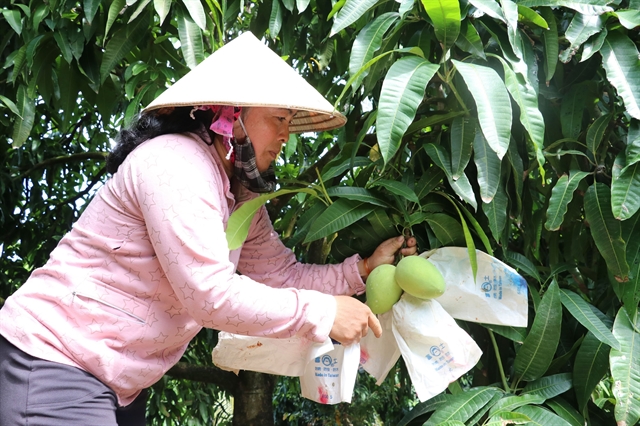DONG THAP GRANTS CODE FOR 133 FRUIT-GROWING AREAS FOR EXPORT
05 Mon, 2020

Harvesting mango in Dong Thap Province’s Cao Lanh City. – VNA/VNS Photo Nguyen Van Tri
The Dong Thap Province's Department of Agriculture and Rural Development has granted a production unit code for 133 fruit-growing areas that qualify to produce fruit for export. Most of the code-granted areas, which cover 7,000ha, grow mango, longan, dragon fruit, jackfruit and rambutan.
To be granted the production unit code, each fruit growing area has a minimum area of 10ha, grows one variety of fruit, and grows fruit under Vietnamese good agricultural practices (VietGAP) standards or other equivalent standards.
Code-granted areas have to meet many other requirements, including keeping a cultivation diary for traceability and following pesticide use regulations.
Nguyen Phuoc Thien, director of the department, said of the province’s fruit growing areas with the code, more than 5,000ha area are for export to mainland China and the remaining for export to the US, Australia, Japan, South Korea, New Zealand, the EU and Taiwan.
Farmers in the province who plant fruits in code-granted areas have higher profits than farmers who grow the same fruits under normal farming methods.
In Chau Thanh District, which has the largest longan growing area in the province, farmers who plant the fruit in code-granted areas have a yield of 17 – 25 tonnes per ha a year and a profit of VND400 million (US$17,000) per ha a year, VND100 million ($4,300) higher than longan planted under normal methods.
Dong Thap has 16 longan growing areas with a total of 634ha that have been granted the code. The province, which is the largest mango producer in the Cuu Long (Mekong) Delta, has 77 mango growing areas on a total area of 4,000ha that have been granted the code.
Mango planted in code-granted areas sell for VND5,000 - 10,000 a kilogramme more than mango planted under normal farming methods.
The province has more than 9,650ha of mango with an annual output of nearly 127,000 tonnes. Most of the province’s mangoes are sold domestically and a small amount is exported.
The province’s mangoes are exported to many markets, including the US, Japan, South Korea, Australia, Singapore and Russia. This year, the province targets increasing its mango growing area to 10,000ha with an annual output of 140,000 tonnes.
The province has been granted geographical indication certification for its Cao Lanh mangoes grown in Cao Lanh City and Cao Lanh District. – VNS
Source: https://vietnamnews.vn/
Publication date: May 20, 2020
Related Post
The true fishmeal carbon footprint
The established Life Cycle Analysis (LCA) methodology to assess the fishmeal carbon footprint only accounts for the vessel fuel and post-harvest processing energy while ignoring the carbon sequestration potential of fish.
View more
Freezing Tropical Fruits: Convenient and Effective Solution with Octofrost Machines
Tropical fruits are always a great choice for providing nutrition and fresh flavor to daily meals.
View more


